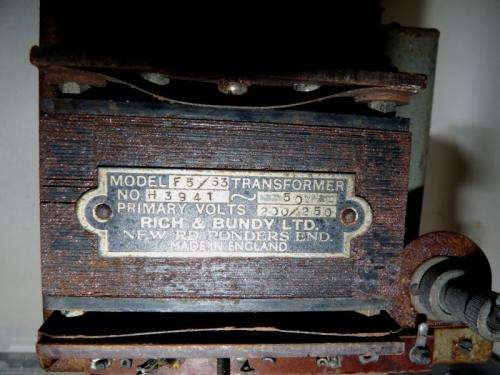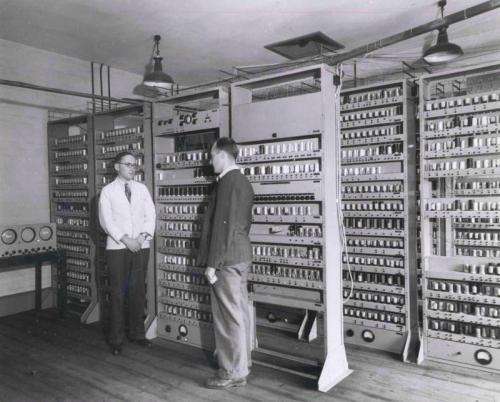Chassis 1A, a Storage Regeneration Unit that keeps data recirculating through a short or long tank. Credit: The National Museum of Computing
The National Museum of Computing has reported the discovery of a rare part of an early computer. With reconstruction expected to be completed later this year, the reconstruction team is eager to find out if there could be even more parts around. The EDSAC (Electronic Delay Storage Automatic Calculator) was one of the world's first computers, originally built in Cambridge in the late 1940s.
Mark Ward, BBC News technology correspondent, said it ran its first programs in May 1949. It is historic as one of the first practical general-purpose computers, used by scientific researchers across the university. It served to analyze data generated by various scientific experiments. The recent news is that an original part of the computer resurfaced in the US. The discovery churns up hope that other parts of EDSAC may still be around. The EDSAC Chassis part is said to have been acquired at some sort of auction of EDSAC's parts in Cambridge in the 1950s, when the computer was decommissioned.
Andrew Herbert, leader of the EDSAC reconstruction project at the museum, said, "When EDSAC was decommissioned, only three chassis were thought to be in existence – one in the Cambridge University Computer Laboratory (since loaned to The National Museum of Computing), one in the London Science Museum and one in the Computer History Museum in Silicon Valley. This is the first time any of our Project Team has heard of the auction and it's tantalizing to think that more parts of the original EDSAC might be out there – somewhere! It is also exciting to think that we may have stumbled across the first computer auction!"
Nameplate, Chassis 1A. Credit: The National Museum of Computing
Built in a modular way, EDSAC had 12 vertical racks which could hold up to 14 individual horizontal chassis. Each chassis provided all or part of one of EDSAC's logically distinct functional units. There were different types of chassis. Some were represented only once while others were replicated. BBC News said the part discovered in the US came to light because of publicity supporting the team's effort to rebuild the computer. The part is referred to as the "Chassis 1A," donated by Robert Little, from Allentown, Pennsylvania. Chassis 1A is a Storage Regeneration Unit, and its role was to keep data recirculating through a short or long tank. There were 42 identical Store Regeneration Units.
Little obtained the part in 1969 from a Cambridge resident who had bought three or four EDSAC racks with the intention of converting them into bookshelves. Little said he had a vague recollection of the chassis owner describing how he was bidding against a scrap-metal dealer at the auction. Little said the probability of finding any more of the EDSAC parts was small because the person passed away in 1984 and had earlier on relocated on the outskirts of Cambridge, and quite probably disposed of unneeded things.
Herbert said, "there is a possibility that other parts of the original EDSAC still exist and could even be in the Cambridge area stored away in lofts, garden sheds and garages."
Maurice Wilkes and Bill Renwick pose by the original EDSAC in the 1950s. Credit: The National Museum of Computing
Chassis 1A was designed to hold 28 of the 3,000 valves that formed the main computational elements of EDSAC, said the museum report. "The chassis variants look quite similar: they all have two long rows of 14 holes each, for valve-holders, allowing each chassis to hold up to 28 valves. Given that it takes three pentode and two diode valves to build an "AND" gate, each EDSAC chassis is therefore barely equivalent to even the simplest of modern integrated circuits."
The discovered Chassis, however, is not a mere puzzle piece to be reinserted. The part is distressed with corrosion; much of the wiring broke away from tag strips. It would be a major task to return this chassis to operating condition. However, the team hopes to try to use some of the valves, if they are still functional, in its reconstructed EDSAC, providing a tangible connection with the original machine.
The general overview video at the start of the project
More information: www.tnmoc.org/news/edsac/rare- … s-usa-after-60-years
© 2015 Tech Xplore


























